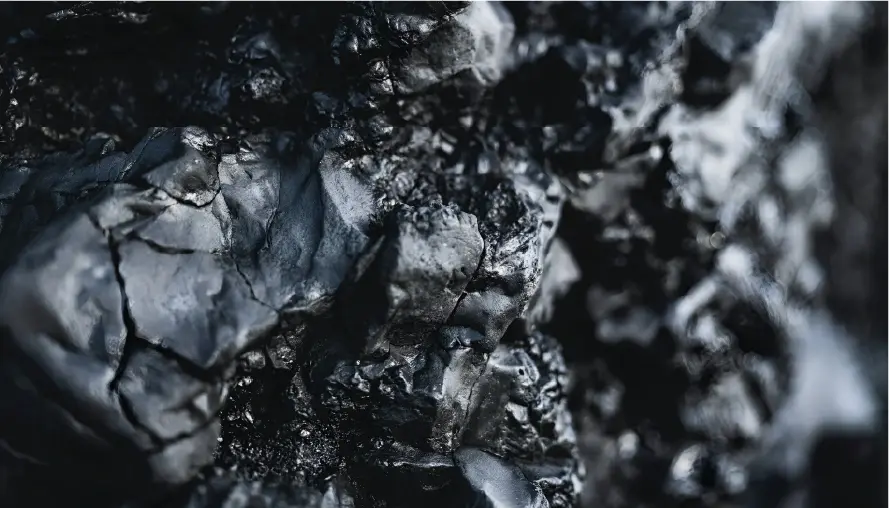If you’ve been exploring natural supplements for health and wellness, you’ve likely encountered shilajit. This tar-like substance found primarily in the Himalayan mountains has been used in Ayurvedic medicine for centuries, but questions about its safety profile and potential side effects of shilajit often go unanswered. As interest in traditional remedies grows, understanding both the benefits and risks becomes crucial for informed decisions about your health.
In this comprehensive guide, we’ll explore the documented side effects of shilajit based on scientific studies, user experiences, and expert insights. Having researched natural supplements for over a decade, and having consultations with healthcare experts in their respective fields, we’ve compiled this resource to help you navigate the potential drawbacks of this popular supplement. By the end of this article, you’ll understand the possible negative effects of shilajit, who should avoid it, and what to do if you experience adverse reactions.
Common Side Effects of Shilajit: What Research Reveals
While many users report positive experiences with shilajit, studies and clinical observations have documented several side effects worth considering before adding this supplement to your routine.
Digestive Disturbances
Among the most frequently reported side effects are gastrointestinal issues. Many first-time users experience mild stomach discomfort, nausea (particularly when taken on an empty stomach), changes in bowel movements, and occasional diarrhea. These digestive disturbances typically occur during the initial period of supplementation as the body adjusts to the compound. Sarah, a 42-year-old yoga instructor, shared: “I started taking shilajit for energy, but the first week was rough on my stomach. Switching to taking it with food made a significant difference.”
Allergic Reactions
Studies on side effects of shilajit indicate that allergic responses can occur, especially in individuals with sensitivities to soil-based compounds or certain minerals. Signs of an allergic reaction may include skin rashes or hives, itching, swelling (particularly of the face, lips, or tongue), and difficulty breathing in severe cases. If you experience any of these symptoms after taking shilajit, discontinue use immediately and seek medical attention.
Impact on Blood Pressure

While this property can be beneficial for some, it presents risks for others. For individuals with already low blood pressure, shilajit might cause dizziness, lightheadedness, and fainting episodes. Conversely, some studies indicate potential interactions with blood pressure medications, which could lead to unexpected fluctuations.
Heavy Metal Contamination Concerns
One of the more serious negative effects of shilajit relates to quality control issues. As a natural substance harvested from rocks, poor-quality or unprocessed shilajit can contain harmful levels of heavy metals such as lead, arsenic, and mercury. A 2018 analysis of various shilajit products found concerning levels of heavy metals in approximately 21% of samples tested. These contaminants can lead to serious health complications with long-term exposure.
Is Shilajit Safe?
Shilajit is extremely safe for many people. When properly sourced, tested, and used appropriately you likely have nothing to worry about when taking this natural mineral. However, individual responses vary widely, and what works well for one person may cause unwanted effects in another. Should you experience any side effects or have further questions on the safety of shilajit, please consult your doctor.

What Benefits Does Shilajit Have?
Shilajit (also known as mumijo, mineral pitch, or mineral wax) is a sticky, tar-like substance that exudes from rocks in mountainous regions, particularly the Himalayas. Rich in fulvic acid and minerals, this ancient remedy has gained popularity for its purported benefits. Many users turn to shilajit for benefits such as:
- enhanced energy and stamina
- improved cognitive function
- increased testosterone levels
- antioxidant properties
- support for heart health
Despite these potential benefits, shilajit isn’t without risks. As with any supplement, knowing the full picture helps ensure you’re making a safe choice for your health regimen.
Who Should Avoid Taking Shilajit Supplements?
Is shilajit safe for everyone? The answer is no. Certain populations face higher risks when using this supplement and should either avoid it entirely or use it only under close medical supervision.
Pregnancy and Breastfeeding Warning
Due to limited safety data and the potential for contaminants, pregnant and breastfeeding women should avoid shilajit. The compound’s effects on fetal development and infants remain largely unstudied, making it a risk not worth taking during these critical periods.
People with Certain Medical Conditions
If you have certain conditions, you should approach shilajit with caution or avoid it altogether. Those with hemochromatosis (iron overload disorder) should be aware that shilajit contains iron and may worsen this condition. People with gout may find that the mineral content aggravates their symptoms. Those with low blood pressure may experience further drops in blood pressure, as mentioned earlier. Individuals with autoimmune disorders should note that some components in shilajit might stimulate the immune system, potentially exacerbating their condition.
Potential Medication Interactions With Shilajit
Studies on side effects of shilajit have identified several potential medication interactions. Use caution if you’re taking blood thinners, as shilajit may enhance their effects, increasing bleeding risk. Those on diabetes medications should know that some research suggests shilajit might affect blood sugar levels. Combining shilajit with iron supplements could potentially lead to iron overload. And as noted earlier, interactions with blood pressure medications could cause unwanted blood pressure fluctuations.

James, a 55-year-old with controlled hypertension, reported: “I didn’t mention the shilajit to my doctor when I started taking it. Within days, my blood pressure dropped dramatically, causing several dizzy spells. I’ve learned my lesson about combining supplements with my prescribed medications.”
How to Minimize Side Effects When Taking Shilajit
If you’ve weighed the benefits and risks and decided to try shilajit, these strategies may help reduce the likelihood of experiencing adverse effects.
Choose Quality Shilajit Products
The purity and processing of shilajit significantly impact its safety profile. To minimize negative effects of shilajit, purchase only from reputable suppliers who conduct third-party testing. Look for products that specify their purification process and check for certificates of analysis that confirm the absence of heavy metals. It’s wise to avoid unusually inexpensive products, as proper purification is costly and lower prices may indicate corners being cut in the manufacturing process. Check out our guide on how to choose the best shilajit capsules for more information.
Start with a Low Dose
Beginning with a lower dose than recommended allows your body to adjust gradually. Start with approximately half the suggested dose on the product label and observe how your body responds for 5-7 days. If the supplement is well-tolerated, gradually increase to the recommended amount. Throughout this process, pay close attention to any new symptoms that emerge as you increase the dosage. This gradual approach can help minimize the intensity of initial side effects.
Take Shilajit With Food
Many digestive side effects can be mitigated by never taking shilajit on an empty stomach. A small meal or snack before supplementation can significantly reduce stomach discomfort and nausea. Some users find that taking shilajit with breakfast provides the best balance of effectiveness and digestive comfort.
Monitor Your Response to Shilajit
Keep a simple journal of any changes you notice after beginning shilajit. Track your energy levels, sleep quality, digestive changes, mood alterations, and any unusual symptoms that appear. This record can help you and your healthcare provider determine if the supplement is working as expected or causing unwanted effects. Consistent monitoring allows you to catch potential issues early before they become more problematic.
What to Do If You Experience Side Effects From Shilajit
If you develop concerning symptoms while taking shilajit, take these steps:
First, stop taking the supplement immediately. Many mild side effects resolve once supplementation ceases. Then, document your symptoms thoroughly, including when they started, their severity, and any factors that seem to make them better or worse. This information will be valuable if you need medical attention.
Consult a healthcare provider, especially if symptoms are severe or persistent. Bring your shilajit product to the appointment so they can see exactly what you’ve been taking. Consider reporting adverse reactions to the FDA’s MedWatch program or your country’s equivalent monitoring system to help improve safety information about these supplements.
If you suspect an allergic reaction, consider allergy testing, as this can help confirm whether shilajit was the trigger and may identify specific components you should avoid in the future.
The Bottom Line: Balancing Benefits and Risks
When considering shilajit as part of your wellness regimen, a thoughtful approach is essential. While research supports several potential health benefits, the documented side effects of shilajit warrant careful consideration.
Our recommendation is to consult with a healthcare provider before starting shilajit. Choose high-quality products from established manufacturers and start with a conservative dosage. Monitor your body’s response carefully and discontinue use if concerning symptoms develop. By approaching this ancient remedy with modern caution, you can make an informed decision about whether its potential benefits outweigh the possible side effects for your unique health situation.
Remember that no supplement, including shilajit, is a magic solution. The most effective wellness approaches combine thoughtful supplementation with fundamental health practices like proper nutrition, regular physical activity, stress management, and adequate sleep.
Have you tried shilajit or are you considering it? We’d love to hear about your experiences or answer any questions in the comments below.






















